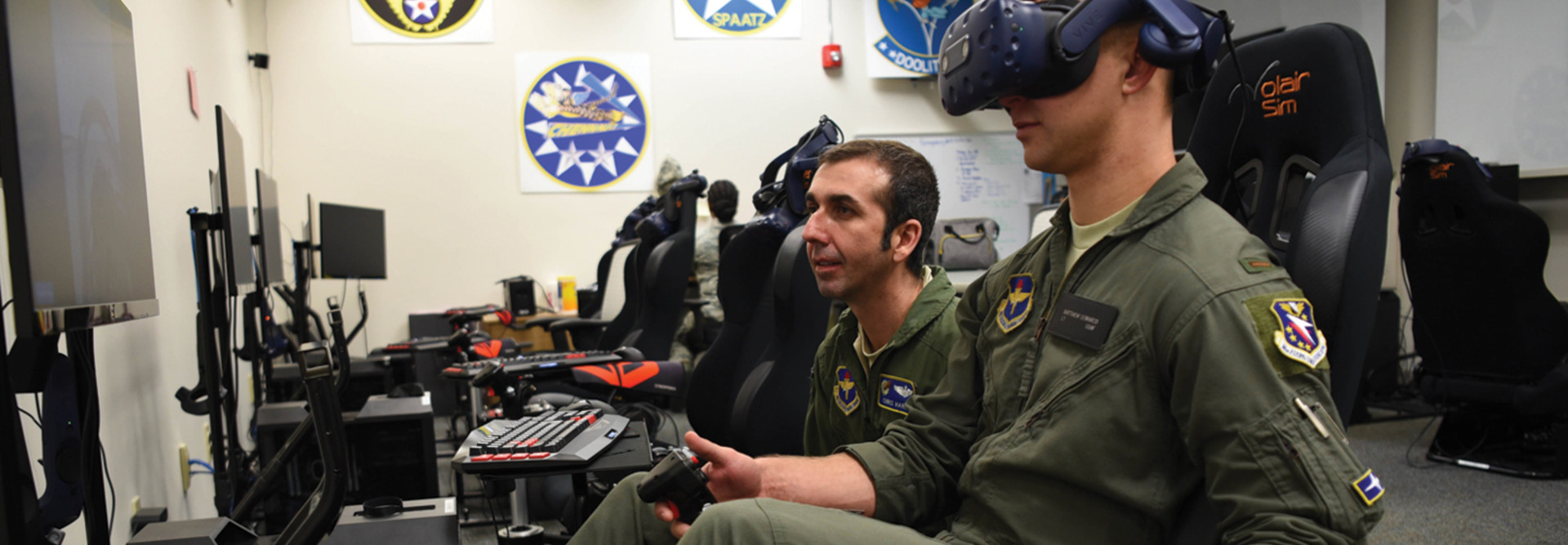Commercial Tools Will Enable an Immersive Training Experience
According to a press release, the JITS programs will use COTS equipment including VR headsets, joysticks, throttle and rudder pedal controls, and gaming chairs to create an immersive training experience.
Under a pilot program, the release notes, the 19th Air Force will host these solutions on Google Cloud, “helping to scale the project to thousands of users in multiple locations, whether inside the classroom, living quarters, or while traveling.”
Google notes in the release that the “software used to manage each student’s training curriculum can vary widely from one aircraft to another” and its cloud tools will allow the DIU to “provide a consistent interface for the Air Force’s learning management system, as well as a single location for storing and managing pilot training data.”
Importantly, the training environment will allow the Air Force to collect and manage data on how trainees are doing both on written tests and flight simulations, Defense One notes.
“We’re moving that same data infrastructure to a place where we can collect it [from] the aircraft itself, despite the fact that these are very basic training aircraft that don’t have things like a data link or traditional data capture methods,” Frahm tells Defense One.
Instructors will therefore be able to have deeper insights into how airmen are performing in flight simulations in ways that cannot be conveyed by simple test scores.
“We’re going the next step and saying, ‘They got that question right but it took them five minutes,’” Frahm says. “That will lead to more sophisticated analysis of a student’s strengths and weaknesses, and help instructors understand what they need to teach. ‘They got that question wrong and two-thirds of the time when they get that question wrong, this other thing happens three weeks later.’ And so we’re going to proactively let the instructor know that. When they get to that event, the instructor needs to cover that in detail so we know the student knows it.”
MORE FROM FEDTECH: See how the Navy uses virtual reality to train aircraft carrier crews.











